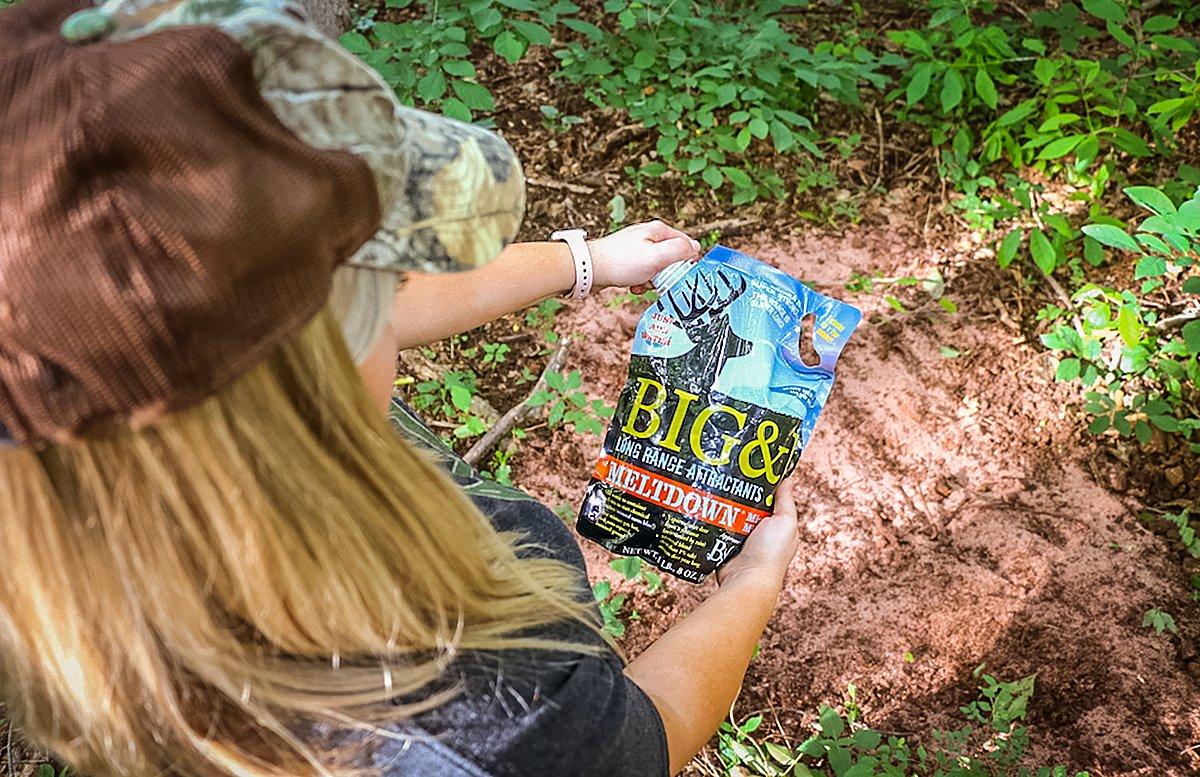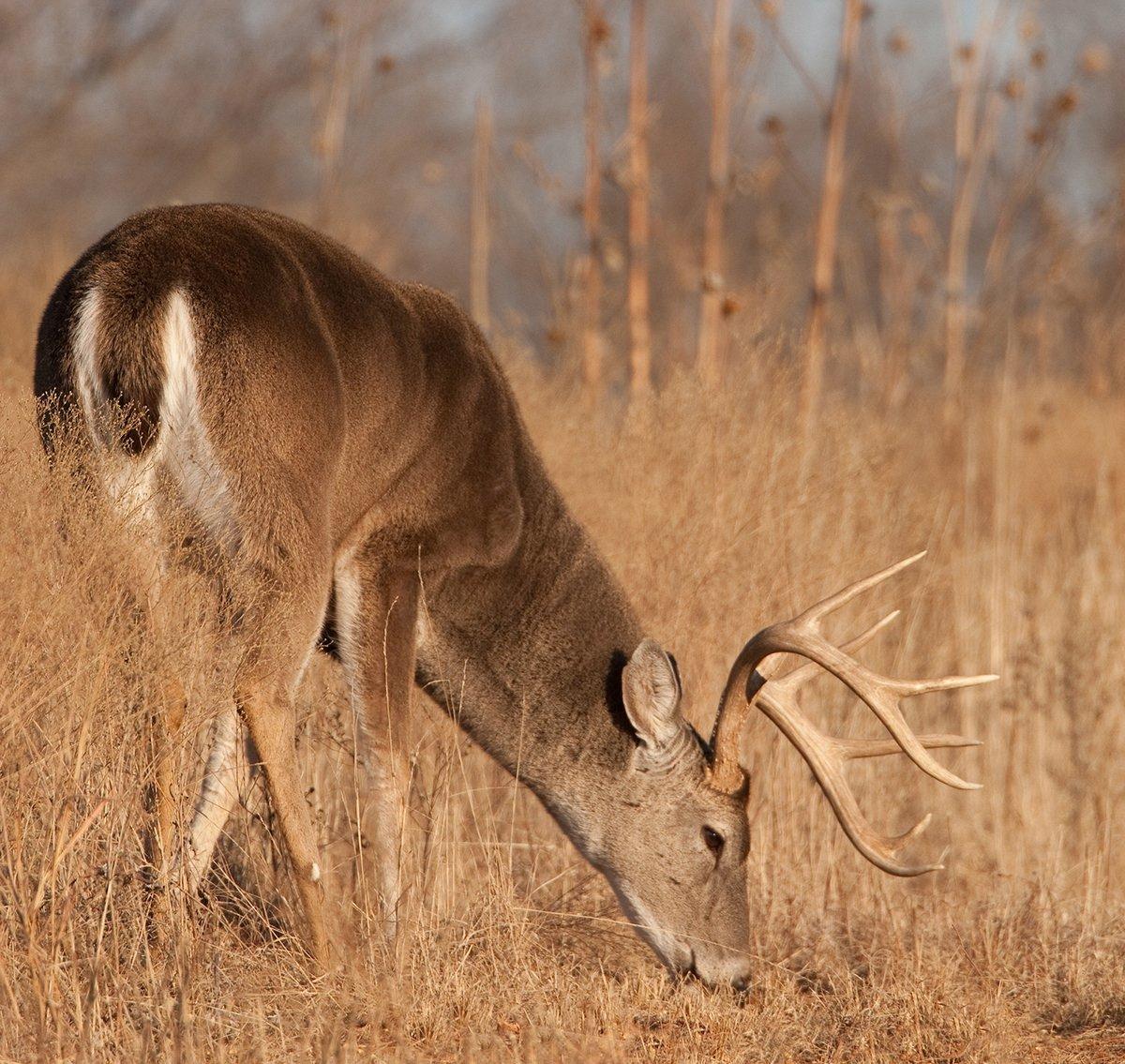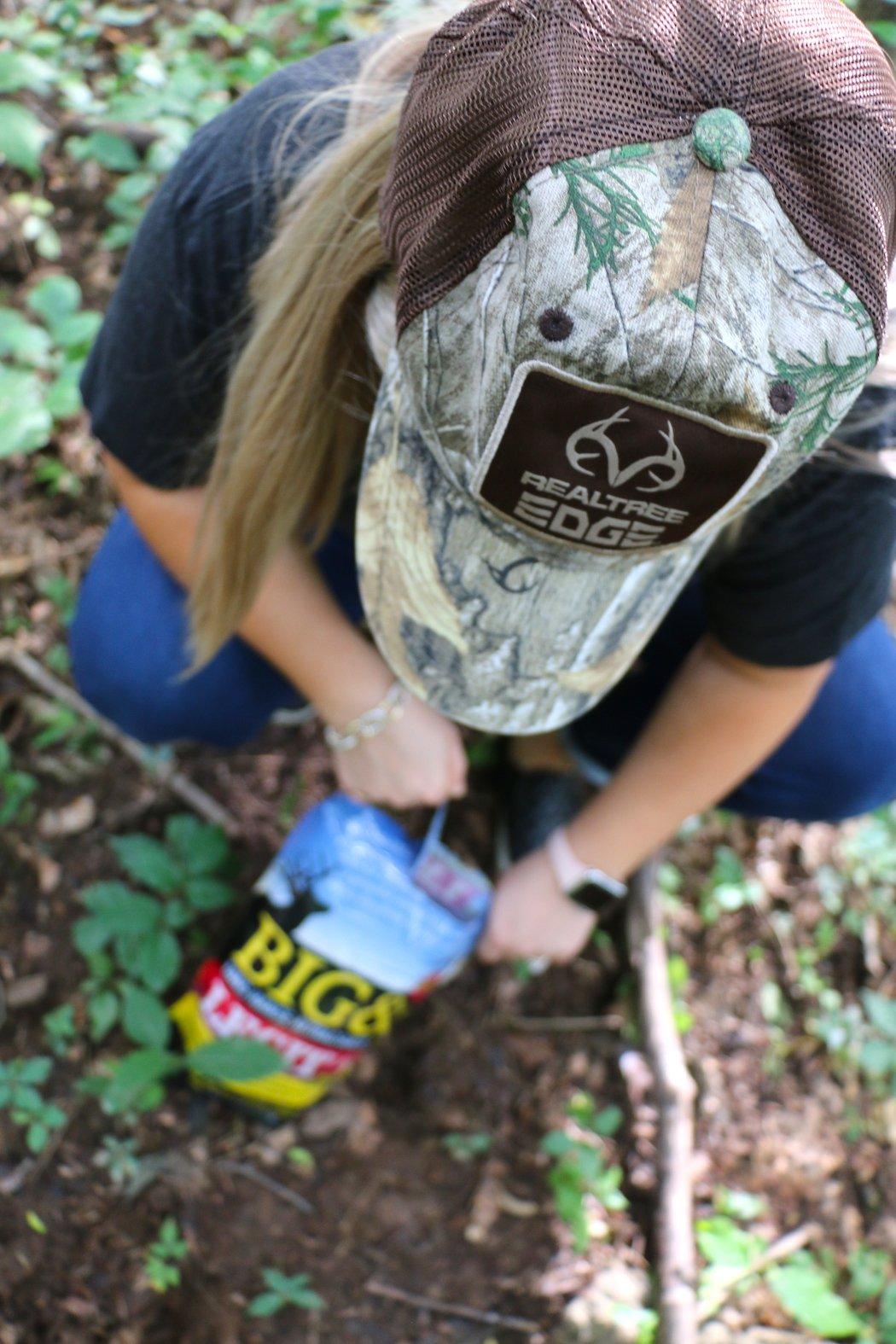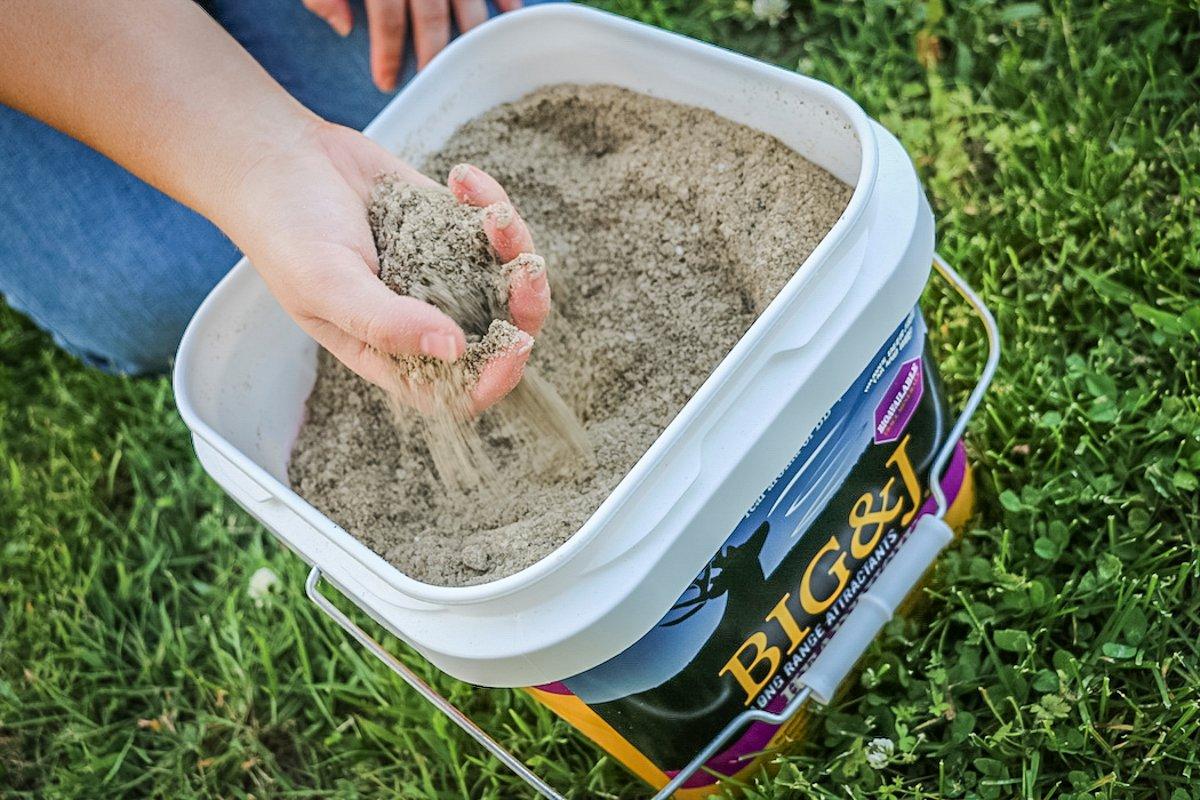A lot of whitetail hunters use supplemental minerals. Here's what the science says about their potential benefits
Does deer mineral actually work? Of course it will attract deer, but do mineral supplements have any nutritional benefits for wild whitetails? If they do, what should hunters know about using them?
We asked Alan Cain, the whitetail deer program leader for Texas Parks and Wildlife, as well as Dr. Will Griffin, Big & J ruminant nutritionist, and Josh Kinser, Big & J marketing director. All know a thing or three about deer minerals and their benefits.
Understanding Deer Digestion
Minerals don't shoot straight to the antlers, as is commonly believed. It's a process, and you must understand the ruminant digestion system of a whitetail before you can understand how minerals play a role.
With a ruminant, you have four separate compartments: reticulum, rumen, omasum and abomasum, Griffin said. You have fermentation and microbes involved in getting the correct nutrients from the rumen to the abomasum and through the small intestine so they can be absorbed.
Certain minerals help digestion flow smoothly. Not only that but they also help increase the efficiency of other bodily functions and processes.
Minerals play different roles.
What Minerals are Important?
Minerals are certainly relevant for deer and are necessary for many cellular and metabolic processes, gestation, lactation, bone growth, and antler development, Cain said. Hunters and deer managers often focus on two key minerals, calcium (Ca) and phosphorus (P), because those two minerals are primary components of antlers and necessary for antler development. In fact, during antler development, the daily requirements for calcium and phosphorus may increase four times above what is required for normal maintenance. To meet this increased demand for these minerals during the relatively short antler-growing period, bucks may increase their daily forage intake, improve absorption efficiencies, and pull calcium and phosphorus reserves stored in bones.
If you read the label on a bag of mineral, you'll notice that a few things, like calcium, sodium and phosphorus, comprise the bulk of the mix, but there are other things in there, too, like traces of cobalt, copper, manganese, selenium and zinc. These are called macro and micro minerals.
But the other stuff is important, too. Sodium plays an important role in hydration, for example, and Griffin says many of the micro minerals have important roles in immune function, energy cascading, synthesizing vitamins, and optimizing the overall performance of the animal. In short, all of this stuff is important to deer.
What's in the Dirt?
Some might ask, doesn't nature already fulfill mineral needs? The answer is yes, no, and it depends.
Hunters and deer managers should have realistic expectations when it comes to mineral supplementation. The primary benefit of it is to help deer meet nutritional requirements that they may not otherwise obtain through their natural diet, especially during antler growth and gestation, when mineral demands are high, Cain said.
The effectiveness of a mineral supplement depends heavily on the quality of the soil. Prime row crop areas frequently grow the biggest bucks, and often, mineral supplements aren't as effective there.
Parts of Arkansas have poor dirt, and our Meltdown product works great for them up until November because of it, Kinser said. I have really good soil where I live in Texas, but my buddy is just an hour and a half away, and his area has some of the worst soil in the state. You can throw Meltdown or Headrush out in areas like that, and it's very attractive to deer.

The major antler growing months are April, May and June, Kinser said. In years when we have significant rainfall producing protein-rich plants, we'll see 20 percent increases in antler growth. Mineral can help in years when drought is more of an issue.
But research shows that it's important to provide supplemental mineral during years with extensive rainfall, too.
Even during those perfect years of rainfall and forage growth, when deer are getting loads of protein and energy from their natural environment, the growth rate is oftentimes so high that the deer can't physically eat enough of that material to meet its requirements, Griffin said. When deer consume more plant mass, it dilutes the mineral content within their food intake. Therefore, mineral supplements can be important during these years, too. It's a nutrient-density-ratio-per-bite issue.
Cain agreed. Sodium is another important mineral deer need, especially for does during gestation, he said. Demand for it can be high in the spring and summer when vegetation has high water and potassium content. Potassium reduces sodium absorption, and there's a high sodium loss as a result of frequent water excretion (urination).
Minerals for All
Every momma in America, when she gets pregnant, the doctor wants her on prenatal vitamins. Why? An increase in calcium, Kinser said. Body builders can lift weights and increase muscle mass without supplements. But they all do it. Why? For the same reasons we supplement deer with minerals — maximizing prospects.
Minerals aren't just for antlers. Think about the overall health of the deer herd, bucks and does. You're filling nutritional voids.
Deer can get enough minerals from their natural diet to survive, Griffin said. Supplemental mineral fills gaps. It results in increased muscle growth, immune response, reproductive success, forage intake and a reduction in skeletal abnormalities. This isn't just about antler growth. It's about overall animal health and maximizing genetic potential.
Satisfying mineral needs primes a buck's body for peak antler growth. A buck isn't going to experience maximum growth until other parts of the body have met their needs for calcium and phosphorus. Once those needs are met, nutrients are freed up for antler development.
When, Where and How to Feed Mineral
Deer have different mineral requirements by season. For example, when deer switch their diet to green forbs in winter and spring, they're lacking in minerals. That's when they exhibit increased need for supplements the most. You'll also see significant mineral intake in summer because demand increases for bucks and does. Because of this, the two best times to freshen mineral licks are at the end of winter and beginning of summer. But mineral sites must be put in the right areas to be effective.
If I just dump mineral anywhere, it isn't going to work. It isn't the field of dreams, Kinser said. Deer won't get the memo or GPS coordinates. Put it somewhere deer already frequent. Put it in their core areas. It takes a lot of scouting and intel to know where to put mineral for hunting purposes.
Beyond that, put the mineral somewhere it won't wash away. Find a hole (or make one), and put it on the ground. Once deer find it, keep freshening mineral in the same location each time. Consistency is key.
How many mineral sites should you have?
In southeast Georgia, I'm running them every 25 acres, Griffin said. That might be a little dense, but I've had pretty good luck with that. In Nebraska, I'm putting out mineral every 30 acres.
In Texas, Kinser puts them out every 100 acres. I put them where I want deer to travel to, he said. I place them almost everywhere there's a water source.
Try to establish new mineral sites just ahead of a good rain. The precipitation helps soak the macros and micros into the soil, which stretches out the lifespan of the mineral lick.
All said, it is possible to feed deer too much mineral. Keep things in perspective.
There are levels of toxicity in both macro and micro minerals, Griffin said. Basically, when intake gets to a certain point, deer will limit how much they consume. A deer can only eat so much before its body tells it to stop or die. This is why you should never mix minerals with feed. We have to be smart about this.
Big & J Mineral Guide
Legit: This is a true mineral that's high in calcium and phosphorous. It's the best mineral option to freshen up your licks each summer and winter.
MSRP: $29.99 (15-pound bag)
HeadRush: This product is loaded with calcium. It also contains key trace minerals, including: zinc, copper, manganese and cobalt. This too is great for year-round supplementation.
MSRP: $24.99
Meltdown: While mineral intake generally reduces in the fall, deer will continue consuming this long after traditional mineral sites lose their attraction.
MSRP: $10.99
Closing Arguments
Hunters love to use mineral supplements, and there's solid evidence showing that they work. Mineral sites are easy to establish, economical to maintain and they're great places to get trail camera photos. If they help a buck grow bigger antlers and a doe to raise a healthier fawn, then what's not to like?
Do you plan to use supplemental minerals this year? Let us know in the thread below.
Don't Miss: What Deer Eat: A Seasonal Guide to Nutrition
Check out more stories, videos and educational how-to's on deer hunting.









